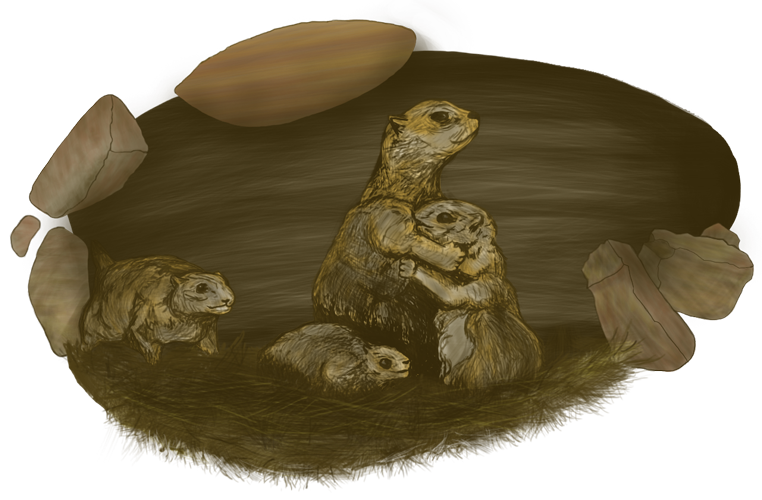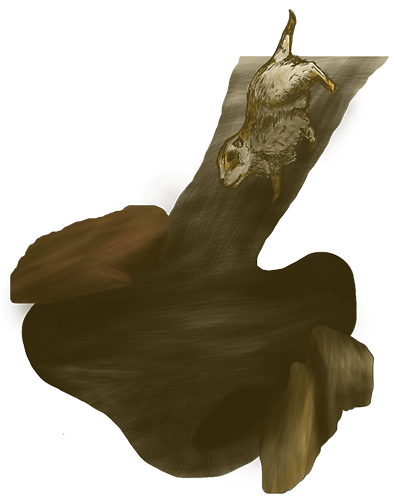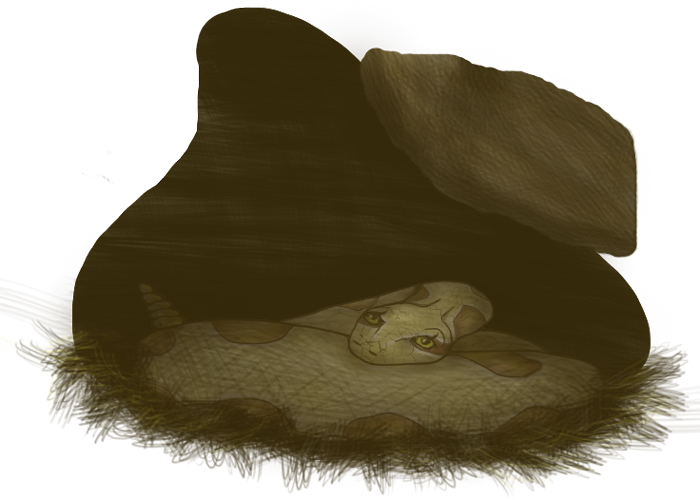History & Accomplishments
Prairie Dog Translocations
This is what got us started! Habitat Harmony was formed after its founders successfully translocated 150 Gunnison's prairie dogs in 2000 from a colony that had been graded to prepare for a soccer field at Foxglenn Park in Flagstaff, Arizona. This was the first known translocation of Gunnison's prairie dogs in northern Arizona.
After incorporating in 2000, Habitat Harmony moved a colony of prairie dogs from Doney Park, just east of Flagstaff. In 2003 we translocated 299 prairie dogs from the Flagstaff Mall expansion site. In 2005 we moved 20 prairie dogs from 4 different sites around Flagstaff, using the sudsing method instead of trapping. This relocation project was preceded by extensive research on the sudsing method, and training from an experienced sudsing relocator from Colorado. In 2007 we moved 16 prairie dogs from a fire station development site on Fort Valley Road.
Humane Management of Prairie Dogs and Wildlife
- Worked with Coconino County to develop Wildlife Disclosure Statements that are distributed to home owners in new developments in Coconino County.
- Assisted with humane management of prairie dogs at Elden Hills Golf Course, Continental Sports Complex, Christensen Elementary School, and Museum of Northern Arizona in Flagstaff.
- Consulted with public schools in Williams, Arizona on humane options for prairie dog management.
- Worked with the developer of the Slayton Ranch housing development in Doney Park on the humane management of a prairie dog colony on its development site when Coconino County Planning and Zoning Commission required the developer to consult with Habitat Harmony.
- Provided input to contractor and the City of Flagstaff to help preserve a prairie dog colony in the area of a new city sewer line.
- Assisted Arizona Game and Fish Department to monitor an Abert squirrel population.
- Worked at Aubrey Valley black-footed ferret reintroduction site.
- Volunteers have worked with private landowners removing noxious weeds to improve wildlife habitat.
- Sponsored rattlesnake ecology and safe handling training for private landowners.
Please visit the Prairie Dog Translocation Section to learn about a few of our translocations!
Influencing Public Policy to Protect Wildlife
- Provided a map of urban prairie dog colonies for the Regional Plan.
- Instrumental in formation of Conservation Study Forum as a resource of scientific expertise for the planning processes of the city and the county to insure protection of northern Arizona’s greatest assests: our wildlife and open space. We have twenty- three scientists who contribute to the Study Forum, guiding the process of revising the Regional Land Use and Transportation Plan. The group is currently working with city staff and the Citizen’s Advisory Committee for the Regional Plan to draft goals and policies for the open spaces. In addition, the group is advocating for a Conservation Lands System to become part of the Regional Plan. Participated in the Working Group that provided input to Arizona Game and Fish Department on a statewide plan for the protection of Gunnison's prairie dogs that was completed in December 2007. We continue to monitor implementation of this Plan.
- Made a significant contribution to the Flagstaff Regional Land Use and Transportation Plan (a twenty year planning document prepared cooperatively by the City of Flagstaff and Coconino County, affecting limitations on urban sprawl and preservation of open space) by adding provisions to protect wildlife and habitat.
- In 2004, supported a petition to list Gunnison's prairie dogs under the Endangered Species Act.
- In 2001, Habitat Harmony was instrumental in promoting a seasonal hunting ban on Gunnison's prairie dogs in Arizona, protecting this vulnerable keystone species during its reproductive season.
- Our volunteers respond to email alerts by contacting representatives on important wildlife issues. We organize letter writing campaigns to inform public officials about the value of wildlife and natural spaces.
Please visit our Advocacy Section to learn more!
Wildlife Quick Reference Guide
Northern Arizona has many plans generated by many different agencies that affect the area’s wildlife and habitat. In 2009 we became aware that there was not an overview, or summary comparing all of these documents, and we decided to create a guide. We hired N.A.U. graduate student Jessica Gist to study the 9 different plans and write a reference guide that would explain the scope and goals of each plan. Jessica Gist also wrote a Summary of the Quick Wildlife Reference Guide at the request of a City Council member. The Wildlife Reference Guide and Summary is referenced in the Regional Plan 2030: Place Matters.
You can view and download the Wildlife Reference Guide on our full page about the guide.
First Vegetation Map of Flagstaff
In 2009, Habitat Harmony was proud to sponsor Dr. Lawrence Stevens of Stevens Ecological Consulting, LLC as he created a draft habitat map of the City of Flagstaff. To our knowledge, Dr. Stevens’ efforts resulted in the first-ever coarse-scale map showing different vegetation types in the City of Flagstaff. This map is an important first step in determining vegetation cover and wildlife habitat, which will help inform City of Flagstaff urban planning efforts during the current ongoing revisions of both the Regional Plan and the Land Development Code.
Working with GIS (Geographic Information Systems) data layers and 2007 aerial overflight photography provided by the City of Flagstaff, and after consulting with Northern Arizona University professors Dr. Tina Ayers (Biological Sciences) and Dr. Paul Beier (Forestry), Dr. Stevens identified eight important coarse-level vegetation types and habitats within city limits. These include:
- Native mixed conifer - oak forest & woodland
- Non-native deciduous and mixed conifer shrub, woodland, and forest
- Native hillslope (chaparral shrub and woodland plants)
- Native grassland meadow
- Disclimax meadows (usually dominated by non-native weeds and often sparsely vegetated)
- Lawn and yard groundcovers
- Riparian meadow
- Open water
Education
- Use presentations, games and activities about the prairie ecosystem of northern Arizona in the "Kid's Care Camps" at Second Chance Center for Animals each summer. The education director at Second Chance Animal Shelter has carried our program to the reservations around Flagstaff.
- Our children’s education program is the model for the prairie dog summer camps held at the Museum of Northern Arizona.
- Provide educational presentations for Flagstaff Festival of Science, regional schools, local wildlife fairs, and churches.
- Give adult educational presentations to Con Slobodchikoff's biology class at N.A.U., to the Wildlife Society at N.A.U. and to other local environmental groups.
- Educational display box for the entrance to the Flagstaff Public Library, featuring a mountain grasslands ecosystem.
- Educational brochure, "Our Prairie Dog Neighbors," completed in 2004 with the cooperation of Northern Arizona University and Arizona Game and Fish Department, is being distributed statewide.
To learn more, please visit our Get Educated Section.
Watchable Wildlife Stewards for Foxglenn
- Led an interpretive walk as part of the Flagstaff Unified Trail System (FUTS) trail 50 mile celebration.
- Conducted two site cleanup days
- Provided two prairie dog talks
- Dusted for disease prevention in the Watchable Wildlife Site
- Stewards for 7.5 acre Watchable Wildlife Site (part of of the AZ Game and Fish Department’s Arizona Watchable Wildlife Experience (AWWE) owned by the City of Flagstaff. This WW site was recently designated as permanent open space.
Learn more about Watchable Wildlife












